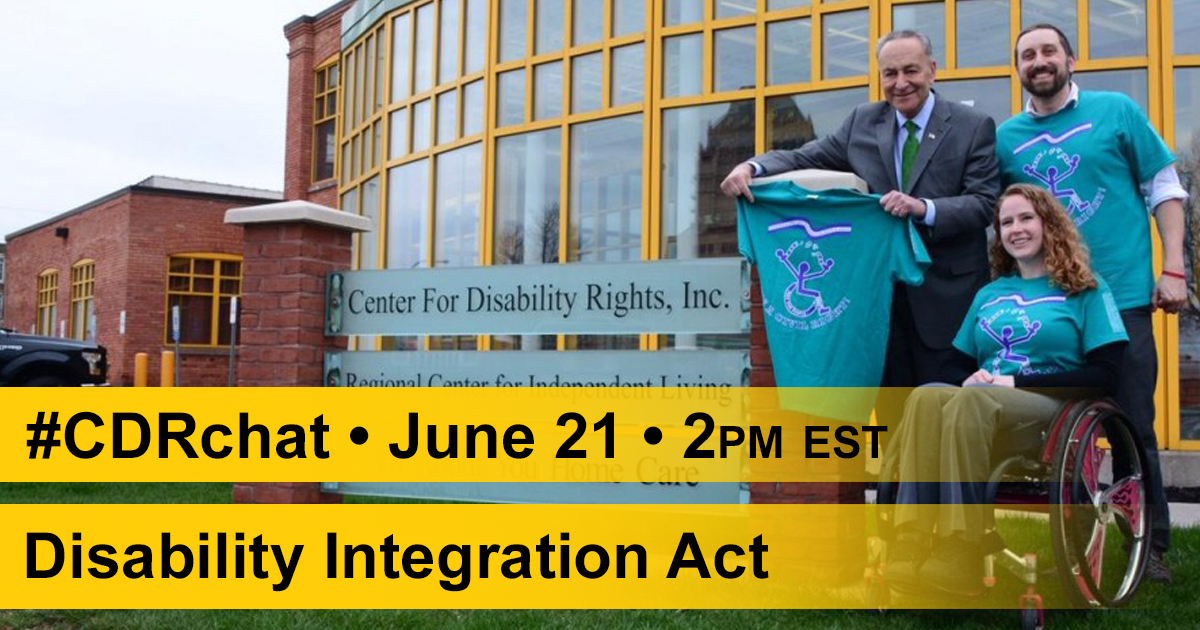- A
- A
- A

Want to learn more about the importance of Disability Integration Act for our community? Want to share your advocacy for this bill? Here is your opportunity to join our Twitter chat!
#CDRchat, presented by the Center for Disability Rights, is aimed at broadening the conversation on a wide variety of disability issues. This month’s chat will be hosted by Stephanie Woodward, our Director of Advocacy, Adam Prizio, our Manager of Government Affairs, and a third surprise guest host! For this month’s Chat we are excited to discuss the topic: “Disability Integration Act” and what we are doing to ensure that our disability rights will be met. You are welcome to join in on the chat! Tune in on Wednesday, June 21st, at 2pm EST!
To participate, you can find the questions for this chat in this post. There will be a recap of the chat posted here.
How to Participate:
Follow @CDRNYS, @IStepFunny and @adam_prizio on Twitter.
When it’s time, search #CDRchat on Twitter for the series of live tweets under the ‘Live’ tab for the full conversation.
If you might be overwhelmed by the volume of tweets and only want to see the chat’s questions, check @CDRNYS’s tweets. Each question will tweeted 4-5 minutes apart.
Check out this explanation of how to participate in a twitter chat by Ruti Regan: https://storify.com/RutiRegan/examplechat
Check out this captioned #ASL explanation of how to participate in a chat by @behearddc
https://www.facebook.com/HEARDDC/videos/1181213075257528/
Please remember to use the #CDRchat hashtag when you tweet.
If you respond to a question such as Q1, your tweet should follow this format: “A1 [your message] #CDRchat.”
Questions:
Q1: Why are community-based personal assistance services important to you compared to institutions?
Q2: Do people with disabilities still have the right to live in an assisted-living faculty or nursery homes if they choose to?
Q3: How would the DIA work in New York State with different services already in place?
Q4: How would the additional community-based services be paid for?
Q5: How does availability of housing relate to access to community-based LTSS? What do you think of this provision?
There’s also a provision in the DIA requiring more accessible & affordable housing.
Q6: Accessible transportation: What does DIA do to address that with the need of housing?
Q7: How is the right to proper community-based services and supports, a civil & human rights issue? What do you think?
Q8: What can we do to support the DIA?
Q9: Are there any other facts about the DIA that we should know about?
We look forward to reading your tweets during the #CDRchat!